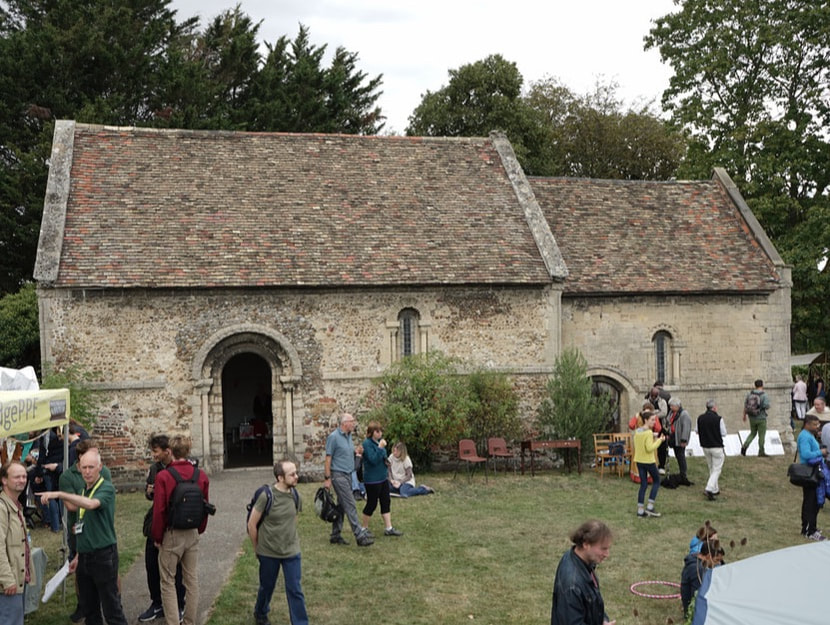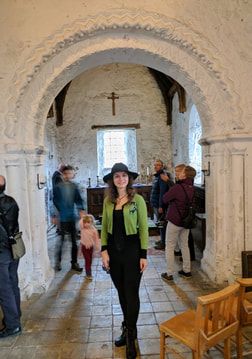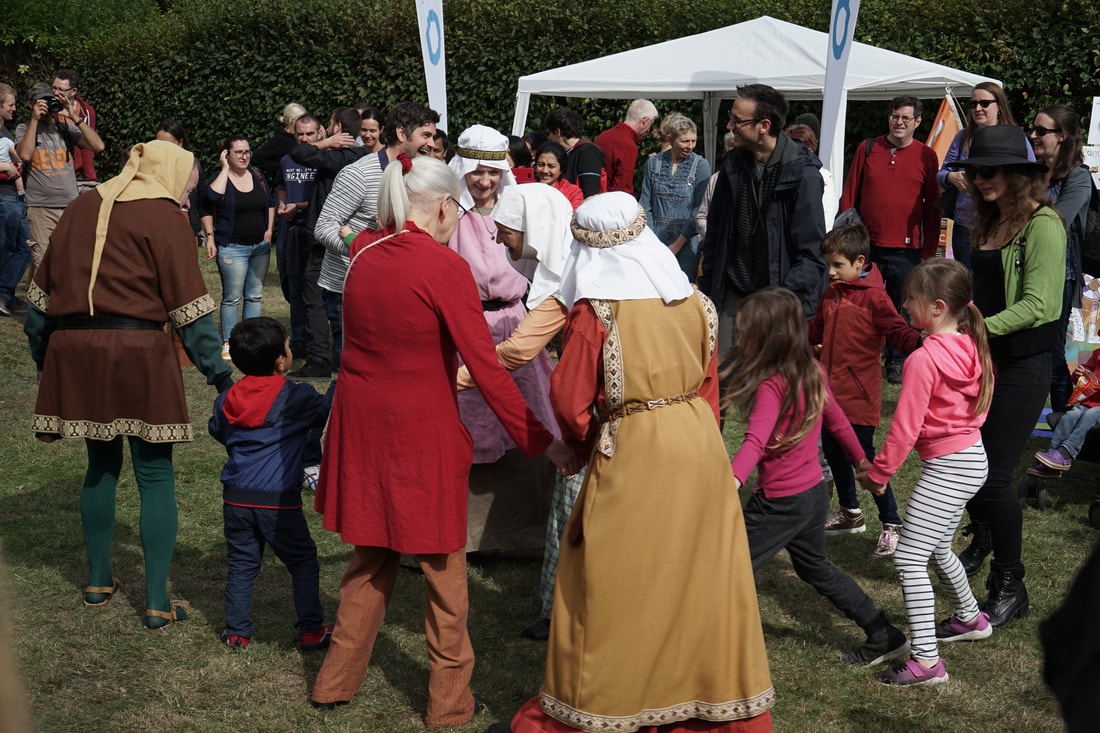| In 1211 a Royal Charter was granted by King John for a three day fair to be held at Steresbrigge (Steer Bridge - a bridge for oxen) beginning on the Feast of the Exultation of the Holy Cross. The fair may have already been established by this time, but this gave it royal assent. Over the following centuries the fair grew in popularity, drawing crowds from far and wide. In 1250 King Henry III sent officers to buy cloth, and Edward I bought hinges, window bars, fetters and chains for rebuilding Cambridge Castle from the fair too. By the end of the 13th century the leper colony had closed, but the fair had established itself |
By this point the fair took a lot to not only organise but build too. Becoming a town of its own, temporary streets and stalls were assembled to cope with the vast numbers that descended each September, taking the employment of almost every Cambridge carpenter. The traders would often sleep in the back of the booths from which they plied their trade, and in the makeshift town square could be found a maypole for dancing and music. Even a pulpit was erected for the Sunday sermons, and the period equivalent of portaloos were provided! Defoe wrote that 'Sturbridge Fair is not only the greatest in the whole nation, but in the world' with 'goldsmiths, toyshops, braziers, turners, milliners, haberdashers, hatters, mercers, drapers, pewterers, a china warehouse, and in a word all trades that can be named in London' as well as 'coffee-houses, taverns, brandy-shops and eating houses innumerable ' As the fair wound to a close, more entertainment and social events could be found in the form of jesters, puppets, 'freaks', plays, acrobatics, wrestling, and other diversions. Of course the darker and not so polite side of society also frequented the fair with much gambling, prostitutes plying their trade and pick-pockets looking for easy takings.
The fame of Stourbridge Fair grew as its importance did, and there are many references to it, if you just know where to look - inspiration for John Bunyan's Vanity Fair, in the diary of Samuel Pepys, and as we've seen Daniel Defoe wrote about it in his Tour. Even Isaac Newton visited during his time at Cambridge University in 1665 and bought several optical instruments along with a copy of Euclid's Elements which he used to teach himself mathematics. A legacy has also been left behind in the street names surrounding the area - Oyster Row, Garlic Row and Mercers Row being three such examples.
The 18th and 19th centuries saw big changes in retail as the changing urban landscape saw the development of the high street. Furthermore, the advantages the fair once had were no longer present. Enclosure of the open fields made organising such a large scale event very difficult and the location was now a disadvantage, since the change brought an influx of the working class to the area, discouraging the more respectable elements of society and with it their purses.
The fair continued to decline until 1933 when it was opened for the last time by the Mayor of Cambridge, Florence Keynes. The crowds of previous years were much diminished to no more than a mere handful and so the fair passed into the annals of history.
The Leper Chapel is now in the care of the charity Cambridge, Past, Future and Present who hold open days and events, including a Medieval Fair each September.
Pearce, Barry Stourbridge Leper Chapel 2003
Ridout, Honor Cambridge and Stourbridge Fair 2011






 RSS Feed
RSS Feed